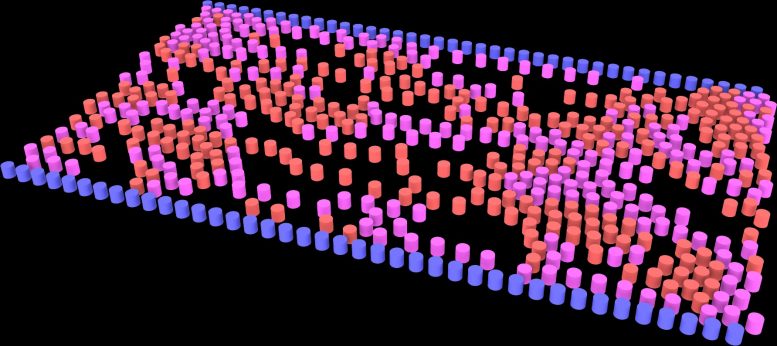
Simulation of pedestrian counterflow (red and pink particles) confined within a hallway (blue boundary), under conditions of weak social distancing. Credit: Kelby Kramer and Gerald J. Wang
Scientists studying the aerodynamics of infectious disease share steps to curb transmission during indoor activities.
Wear a mask. Stay six feet apart. Avoid large gatherings. As the world awaits a safe and effective vaccine, controlling the COVID-19 pandemic hinges on widespread compliance with these public health guidelines. But as colder weather forces people to spend more time indoors, blocking disease transmission will become more challenging than ever.
At the 73rd Annual Meeting of the American Physical Society’s Division of Fluid Dynamics, researchers presented a range of studies investigating the aerodynamics of infectious disease. Their results suggest strategies for lowering risk based on a rigorous understanding of how infectious particles mix with air in confined spaces.
Research early in the pandemic focused on the role played by large, fast-falling droplets produced by coughing and sneezing. However, documented super-spreader events hinted that airborne transmission of tiny particles from everyday activities may also be a dangerous route of infection. Fifty-three of 61 singers in Washington state, for example, became infected after a 2.5-hour choir rehearsal in March. Of 67 passengers who spent two hours on a bus with a COVID-19-infected individual in Zhejiang Province, China, 24 tested positive afterward.
William Ristenpart, a chemical engineer at the University of California, Davis, found that when people speak or sing loudly, they produce dramatically larger numbers of micron-sized particles compared to when they use a normal voice. The particles produced during yelling, they found, greatly exceed the number produced during coughing. In guinea pigs, they observed influenza can spread through contaminated dust particles. If the same is true for the SARS-CoV-2, the researchers said, then objects that release contaminated dust–like tissues–may pose a risk.
Abhishek Kumar, Jean Hertzberg, and other researchers from the University of Colorado, Boulder, focused on how the virus might spread during music performance. They discussed results from experiments designed to measure aerosol emission from instrumentalists.
“Everyone was very worried about flutes early on, but it turns out that flutes don’t generate that much,” said Hertzberg. On the other hand, instruments like clarinets and oboes, which have wet vibrating surfaces, tend to produce copious aerosols. The good news is they can be controlled. “When you put a surgical mask over the bell of a clarinet or trumpet, it reduces the amount of aerosols back down to levels in a normal tone of voice.”
Engineers led by Ruichen He at the University of Minnesota investigated a similar risk-reduction strategy in their study of the flow field and aerosols generated by various instruments. Although the level of aerosols produced varied by musician and instrument, they rarely traveled more than a foot away. Based on their findings, the researchers devised a pandemic-sensitive seating model for live orchestras and described where to place filters and audience members to reduce risk.
While many formerly officebound employees continue to work from home, employers are exploring ways to safely reopen their workplaces by maintaining sufficient social distance between individuals. Using two-dimensional simulations that modeled people as particles, Kelby Kramer and Gerald Wang from Carnegie Mellon University identified conditions that would help avoid crowding and jamming in confined spaces like hallways.
Traveling to and from office buildings in passenger cars also poses an infection risk. Kenny Breuer and his collaborators at Brown University performed numerical simulations of how air moves through passenger car cabins to identify strategies that may reduce infection risk. If air enters and exits a room at points far away from passengers, then it may reduce the risk of transmission. In a passenger car, they said, that means strategically opening some windows and closing others.
MIT mathematicians Martin Bazant and John Bush proposed a new safety guideline built on existing models of airborne disease transmission to identify maximum levels of exposure in a variety of indoor environments. Their guideline depends on a metric called “cumulative exposure time,” which is determined by multiplying the number of people in a room by the duration of the exposure. The maximum depends on the size and ventilation rate of the room, the face covering of its occupant, the infectiousness of aerosolized particles, and other factors. To facilitate easy implementation of the guideline, the researchers worked with chemical engineer Kasim Khan to design an app and online spreadsheet that people can use to gauge the risk of transmission in a variety of settings.
As Bazant and Bush wrote in a forthcoming paper on the work, staying six feet apart “offers little protection from pathogen-bearing aerosol droplets sufficiently small to be continuously mixed through an indoor space.” A better, flow-dynamics-based understanding of how infected particles move through a room may ultimately yield smarter strategies for reducing transmission.
Highlighted Abstracts
Singing, Dust, and Airborne Disease Transmission
Risk Assessment of Airborne Disease Transmission during Wind Instrument Plays
Airflows inside Passenger Cars and Implications for Airborne Disease Transmission
A Guideline to Limit Indoor Airborne Transmission of COVID-19

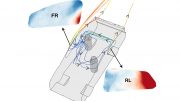
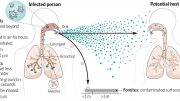
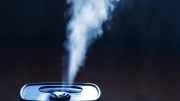


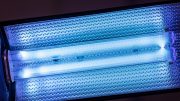
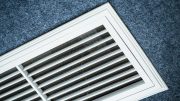
Very informative
Thanks
REBEL’S DAILY REPORTS AT https://www.facebook.com/ron.mccune.3
Ah droplets! We are at a battle for our lives against droplets and the darn droplets are harming and killing us people by the millions! Are we that inept that we can’t even come up with some kind of mechanical device that can neutralize the harmful effects of the coronavirus and other viruses and germs that hide inside a droplet? Droplets from humans are the only way that this coronavirus survives. If we make a machine of some kind that will be installed inside of every area/room of all dwellings where the public mingle that will circulate the air through an obstacle course for a virus or germ to have travel through in order to get out of the other side of machine that it just got vacuumed into. Let’s set up a air circulating system that will be an air flow that will have the coronavirus and other viruses and germs feel like it’s in a pinball machine that has a maze of twisting laser treated copper tunnels and head banking against numerous laser treated copper walls kind of obstacle course that will heat up and use ultraviolet light to destroy any virus or germ. Put these machines about eight feet above all areas where people are and especially where people mingle. Of course you may say that we won’t need these machines once we get the vaccination for the virus but think about this. Shouldn’t we be planning for whatever may happen in the future? What makes you think that this will be the last or only virus that causes all these problems that the coronavirus caused? Haven’t we learned that it’s better to prepare than to be caught not knowing what to do when the next situation like this happens? Wouldn’t it be a fantastic idea to install this machine I described first in every hospital and medical facility/office as well as every school and then every place of work? If we were to do that then we will have a defense set up that will fight off most likely any virus or germ that nature can make! Think of all the money we can save if hardly anyone got colds or the flu or any other illness that viruses and germs cause. There would be so many less deaths and misery with this machine installed most everywhere. Someone could get rich making these machines! The government could organize a group of workers to design this kind of machine. Why hasn’t anyone made this machine yet?
Ozone air purifiers do that… some countries not nearly as arrogant as the U.S. have been using it to purify air and water for over 20 years. Our planet generates ozone all day every day but it can’t keep up with the pollution rate at this point. Ozone… pass it on!
Great idea. It’s called a “mask.”. Wear one.
Sounds like you’ve got it all figured out. Don’t forget, “Life finds a way.”
The machine you speak of is called a filtration unit. They have existed for many years. A true HEPA filter will stop the virus. To go one step further would be to use a ULPA. They induce more resistance to airflow so they do require a stronger airflow from a higher power fan than most air systems already employ but, they are an easy solution. It just takes money.
For hundreds of years,viruses have played a cat and mouse game with the human immune system.
All higher rated small partical HEPA filtration catchesthe virus. The problem is how to get all the aerosol being generated to go through the machine. I prefer a fresh air ventilation plan that induces a noticeable breeze and exceeds ten complete air changes an hour. That means no obstructions to cause eddies of swirling air and enough heat or AC to bring the outside air temperature to a comfortable level. Unfortunately energy intensive but acceptable during health emergencies.
The best approach for a car is to employ the powered fresh air ventalation system all modern cars employ. Make sure recirculation button is off, turn fan speed to high, direct air flow to dash, and defrost if windshield bis fogging and set temperature control to feel comfortable with a stiff breeze hitting your face. The air entering front will carry aerosol past you and passenger to back and out the hidden one way vents in the rear quarter panels. The fan noise will be intrusive but a small price to pay.
This approach avoids changing air pressures, flow directions and turbulence varing with changes of vehicle speed with open windows. They are Impossible to manage consistently.
Great idea except AC systems are (almost all) not sized for 100% outdoor air. Try going full outdoor air on a hot day and the walls will sweat, followed by mold growth.
Likewise AC units are not (typically) designed for HEPA filters so installing them will result in REDUCED air flow
LOL the examples they used, choir practice and a bus, both had CLOSE QUARTERS FOR MORE THAN !5 MINUTES as the CDC recommends as a limit, but somehow brilliantly conclude that spacing out doesn’t help. These “scientists” probably invented global whining, too.
Look at hair as well as air as a source of transition along with human skin cells which make up 25 per cent of the dust in the air.No better filter than hair to trap droplets.
When I was out for a walk the other day, it was 10 degrees C and at the due point. When I breathed out, my breath and the air around which was moving at the same pace just hung there and grew. It was amazing to actually see.
So air to be safe has to move vertically down to be safe. I like the 20×20″ cube with merv13 filters as a support with a horizontal fan on top, all held together with ducked tape.
I think I know how,what,who,where,when.
Mark my words here and put a date on it – If this level of interaction continues at this pace the human civilisation will be extinct within 5 years. This amount of in depth scrutinisation of how we conduct life in a world with constant germ warfare on us has been going on in the circles of science for perhaps two centuries but people have been living as humans for thousands of years without any mass hysteria. All the joy of living is being removed so what is the point. A bigger yacht that we can move around in with Hazmat suits on or a home that is completely sealed off from the outside world and only contacts family through a plastic screen – could this ever happen in 2020 nah it is just a scare movie is it not.
Follow the science and let them do their jobs follow the rules Wash your hands and face, distance works do not have large parties and politicians tell you that they have it handled like our past president is trying to sell. Have of the world is doing better than us in following these rules showing they work, while every time politicians don’t want you to wear masks we have deaths,you are killing your own people think of your family and friends that is what a mask does.
What about air hand dryers in restrooms? They seem like a terrible idea to me, but I’ve seen people using them as normal; as if washing and drying hands is important. But wouldn’t they spread virus far and wide? I hadn’t seen any with signage saying not to use them.
Boring article because it didn’t really say anything, plus its well known that viruses spread much easier with stale air. Yet one would think nobody knows anything with the wild things said about covid. Indoors needs air flow which is old news. Fresh air exchangers for HVAC been around forever. But it fell out of favor because its takes more power and we cannot have that. Much better to keep schools closed up so the regular flu virus can run wild.
Plenty of studies already know if all indoor areas had good air exchange people catching viruses would go way down. It was common in the past for places to open windows just for that reason, plus get more sunshine in. Now, its see how tight we can make it so will save a penny. UVC light & air flow with outside air & filters destroy the virus very fast. Old studies show that but lets ignore it and saw we just don’t know.